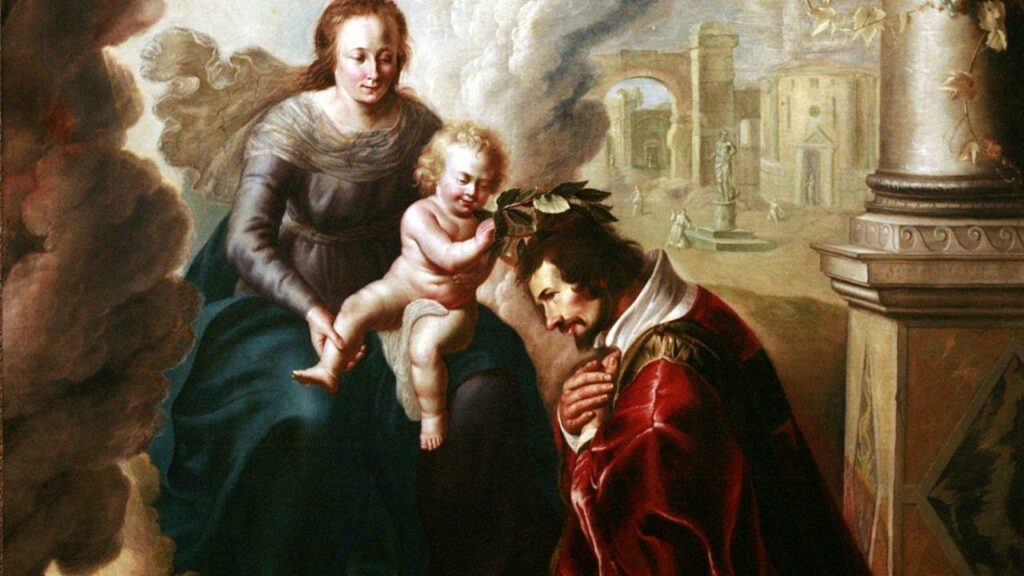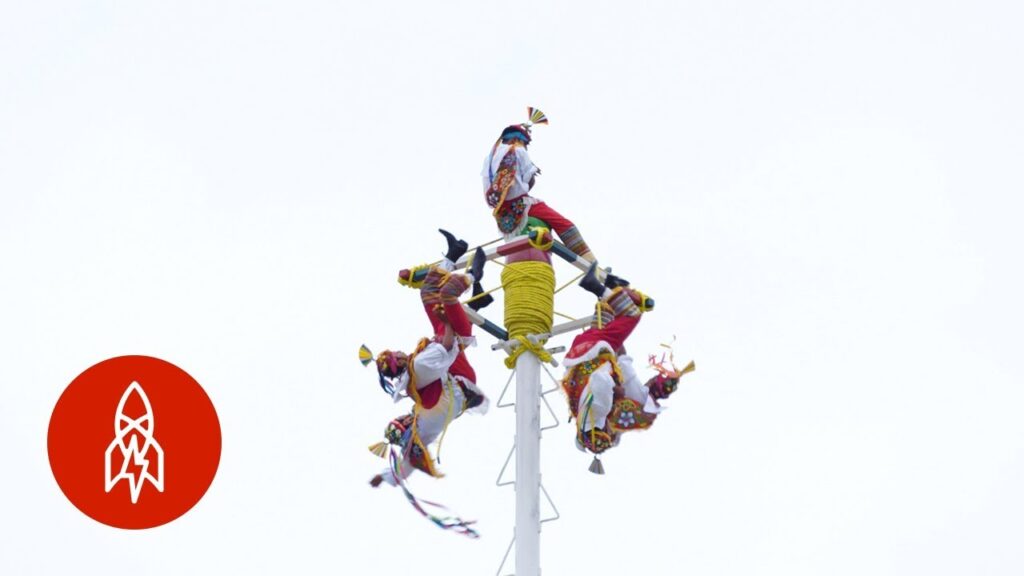Discover the Vibrant Festival of Saint Lawrence Martyr in Zinacantán
Embark on a journey to the heart of Chiapas and witness the extraordinary spectacle of the Festival of Saint Lawrence Martyr, held in the indigenous town of Zinacantán. Each year, this vibrant event transforms the town into a kaleidoscope of color, traditional music, and cultural richness, attracting visitors and photographers from around the world.
The festival, dedicated to the town’s patron saint, San Lorenzo, is a rhapsody of religious fervor and communal joy. Ceremonies begin with a blend of pre-Hispanic rituals and Catholic traditions. As the sound of fireworks resonates through the air, locals donned in intricately embroidered attire, partake in elaborate dances and processions. These cultural expressions are a testament to the living legacy of Zinacantán’s Tzotzil Mayan heritage.
One of the most breathtaking sights is the decoration of the San Lorenzo church. The community comes together to adorn the space with a mesmerizing array of fresh flowers grown in the local greenhouses. The air is scented with the perfume of lilies, carnations, and a plethora of other blooms, creating a visual and olfactory feast that is genuinely captivating. It is a remarkable sight that pays homage to the town’s deep-rooted connection to horticulture and the earth.
In addition to spiritual observances, the festival is also a gastronomic delight. Visitors are treated to a variety of traditional dishes such as tamales, pozol, and other regional specialties that offer a taste of Zinacantán’s culinary traditions. Each bite is a journey through the flavors that have been passed down through generations and remain an integral part of the celebrations.
The Festival of Saint Lawrence Martyr is not just a feast for the senses, but also a profound display of Zinacantán’s community spirit. The town’s residents open their homes to guests, sharing stories and allowing a glimpse into their ancestral practices. This warm hospitality provides a rare opportunity for visitors to engage with the local culture on a truly intimate level.
Exploring Zinacantán: The Most Colorful Town in Chiapas
Nestled in the lush highlands of Chiapas, Zinacantán is a vibrant testament to the rich cultural tapestry of Mexico. Often referred to as the flower garden of the Chiapas region, this small Tzotzil Maya community exudes an energetic aura with its brilliantly colored textiles and flower-filled streets. A visit to Zinacantán is not just a feast for the eyes; it is an immersive experience into an ancient culture that continues to thrive in the modern world.
The people of Zinacantán, known for their exquisite weaving techniques, create intricate textiles that are renowned throughout Mexico and beyond. These textiles are not merely decorative; they are a language of their own, telling stories of the community’s beliefs, history, and everyday life. When you walk through the town’s market, you are struck by the array of hand-loomed fabrics, each piece more vibrant than the last. The intense reds, blues, and purples of their traditional attire, notably the women’s blouses and the men’s sashes, are a sight to behold.
A key highlight when visiting Zinacantán is the chance to witness the local festivals, where the town’s color comes to life in motion. Traditional dances, music, and a parade of indigenous flora show the deep bond the Tzotzils have with nature. The church of San Lorenzo, located at the town’s center, becomes the heart of these festivities, drawing locals and travelers alike into its colorful embrace. Visitors leave with lasting impressions of Zinacantán’s exuberant spirit and the warmth of its people, who welcome everyone into their world of color and tradition.
The Cultural Significance of Saint Lawrence Martyr’s Festival
The Saint Lawrence Martyr’s Festival, known in Mexico as the «Fiesta de San Lorenzo Mártir,» is a vibrant testament to the nation’s rich tapestry of Catholic traditions blended with indigenous cultural elements. Celebrated on August 10th, this festival honors Saint Lawrence, one of the early Christian martyrs, who is revered for his faith and his dedication to the poor. Throughout various regions of Mexico, particularly in the states with strong indigenous influences, the festival becomes a focal point for cultural expression and communal unity.
In the small town of San Lorenzo, located in the state of Hidalgo, the festival is especially notable for its elaborate customs. Dance performances often take the center stage, with participants donning colorful and often intricately designed costumes that symbolize both religious and indigenous narratives. The ‘danza de los arqueros’, or the dance of the archers, is a striking example, symbolizing the struggle between good and evil, and ultimately, the triumph of faith.
Another aspect that underscores the cultural importance of the festival is the incorporation of pre-Hispanic culinary traditions. The community gatherings are marked by the sharing of traditional dishes such as ‘barbacoa’, a method of cooking meat that has been passed down through generations. Such culinary practices during the festival not only provide sustenance but also serve as an important cultural linkage, embodying the blend of Spanish colonial and indigenous gastronomy that defines Mexican cuisine.
Moreover, the Saint Lawrence Martyr’s Festival is a time when the social fabric of the community is strengthened. The organization and preparation of the festivities foster cooperation and reaffirm societal bonds. It is a period where differences are set aside, and people come together to honor shared heritage, beliefs, and traditions, showcasing the cultural significance that extends beyond religious observance and into the heart of communal identity in Mexico.
What to Expect During the Festival of Saint Lawrence Martyr
The Festival of Saint Lawrence Martyr, celebrated predominantly in the culturally rich town of Santa Catarina, is an event that paints a vivid picture of Mexico’s deep-rooted traditions and jubilant celebrations. Held annually on the 10th of August, this festival encapsulates the charm of Mexican festivities with a unique blend of religious devotion, vibrant parades, and community feasts.
Vibrant Processions and Performances: One of the most visually striking features of the festival is the colorful parades. Locals dress in elaborate costumes, often resembling saints, warriors, and mythological creatures, to march down the cobbled streets to the sound of live mariachi bands. The air is filled with the rhythms of traditional music as dancers perform indigenous dances, a homage to both Catholic and pre-Hispanic traditions.
Local Cuisine and Artisanal Markets: A journey for your taste buds awaits as the festival is also an opportunity for visitors to indulge in authentic Mexican cuisine. Food stalls and pop-up markets offer a plethora of local delicacies, from savory tamales to sweet churros, along with handcrafted goods representative of the regional artistry. The inviting aromas and the opportunity for culinary exploration are sure to entice any traveler.
Religious Observance: At the heart of the festival lies the solemn religious observance in honor of the patron saint, Lawrence Martyr. The local church holds a special mass, often followed by a quiet procession, providing a contrast to the otherwise lively celebrations. Participants and onlookers alike take a moment to pay homage, demonstrating the blend of festivity and piety that characterizes this event.
A Guide to Enjoying Zinacantán’s Festivities Responsibly
Located in the lush central highlands of Chiapas, the vibrant town of Zinacantán is renowned for its colorful festivals that celebrate the rich cultural traditions of the local Tzotzil Maya community. As visitors, it’s crucial to approach these celebrations with respect and mindfulness. The people of Zinacantán take great pride in their festivities which include a blend of pre-Hispanic customs and Christian beliefs, manifesting in intricate costumes, elaborate rituals, and communal feasts that capture the essence of their shared identity.
When participating in Zinacantán’s festivities, it’s important to understand the significance of the event. Many festivals are rooted in the agricultural calendar, giving thanks for the harvest or praying for favorable planting conditions. Others honor patron saints with a series of processions and church services. As an observer, remain polite and unobtrusive, especially during sacred ceremonies. Always ask for permission before taking photographs, and avoid touching any ceremonial artifacts or attire without explicit consent. This ensures that you’re not only respecting the local customs but also contributing positively to the preservation of the community’s way of life.
In Zinacantán, the community often extends its hospitality to visitors, inviting them to partake in shared meals and dances. While indulging in the local cuisine or participating in a dance may be invigorating, remember to do so in moderation. Overconsumption or inappropriate behavior can be seen as disrespectful and may disrupt the harmony of the event. Additionally, supporting local artisans by purchasing handmade crafts can be a wonderful way to remember your experience, but make sure to do so ethically by paying fair prices and valuing the artisan’s work. By acting responsibly, you help ensure that Zinacantán’s unique traditions continue to thrive and remain accessible for future generations of respectful visitors.
How the Festival of Saint Lawrence Martyr Celebrates Indigenous Traditions
Mexico’s rich tapestry of cultures shines brightly during the Festival of Saint Lawrence Martyr, a vibrant blend of indigenous customs and Catholic traditions. This annual event, which takes place in the indigenous community of the Purepecha Plateau in Michoacán, illuminates the deep-rooted respect for ancestral rituals that have been intertwined with Christian beliefs.
At the heart of the festival is the homage paid to Saint Lawrence, a Christian martyr, through a series of traditional indigenous dances, each dance a testament to the blending of pre-Hispanic spiritual practices with Christian symbolism. The dancers, adorned in elaborate costumes that often include masks and brightly colored ribbons, perform ancient choreographies that have been passed down through generations. These dances are much more than mere entertainment; they serve as a bridge between the past and the present, a living narrative of the community’s history and beliefs.
In addition to dance, the festival is marked by the preparation of traditional cuisine, an essential element of the celebration that also honors indigenous culinary heritage. Cooking methods that have been preserved over centuries are used to create dishes unique to the Purepecha community, providing a flavorful exploration of indigenous gastronomy. These shared meals are a communal act of remembrance and gratitude, fostering a sense of solidarity and continuity among participants.
The harmonious coexistence of rituals, both old and new, during the Festival of Saint Lawrence Martyr is a potent reminder of the enduring strength of indigenous cultures within Mexico. As the community gathers to reenact age-old customs, they breathe new life into their heritage, ensuring that their traditions remain an indelible part of the country’s cultural mosaic.



